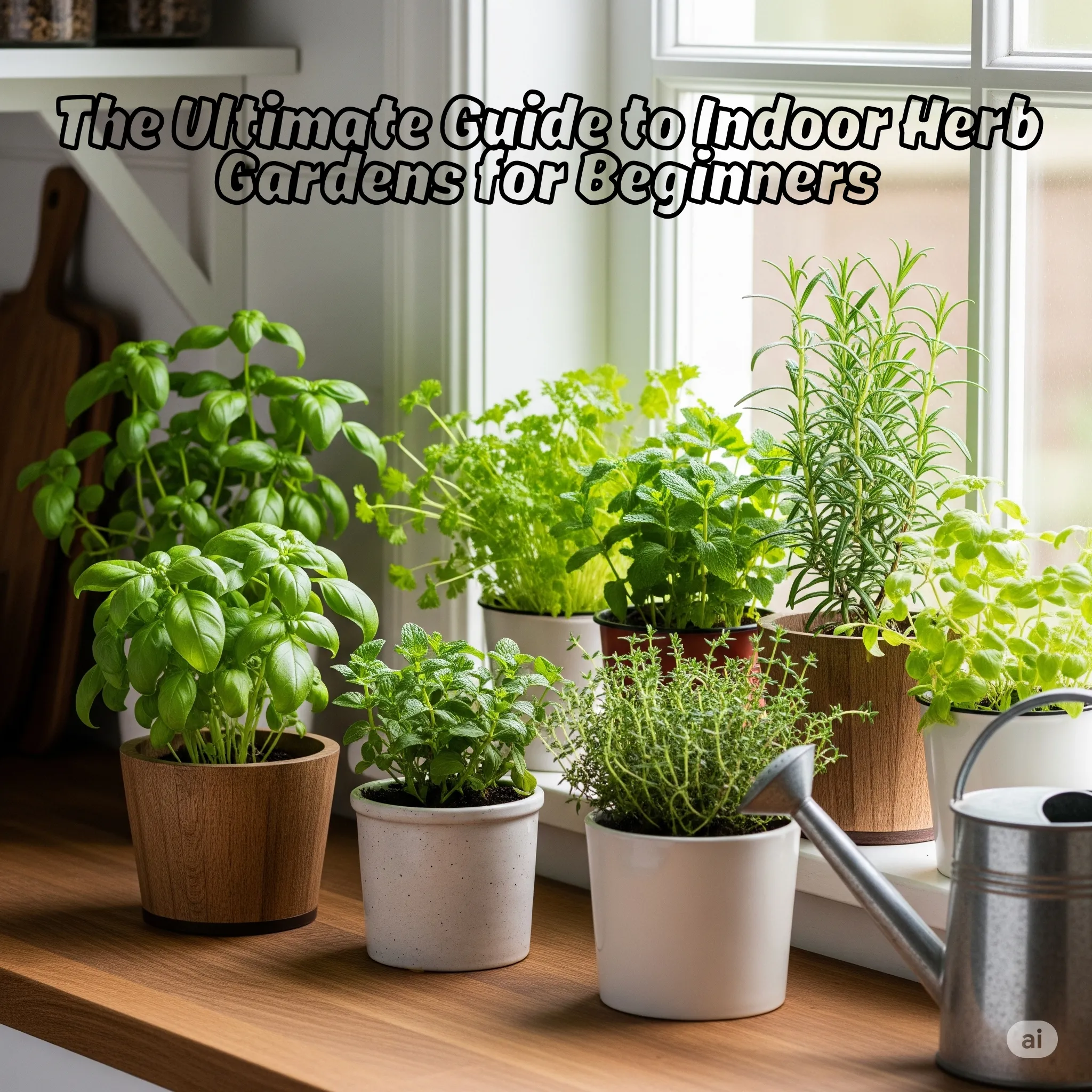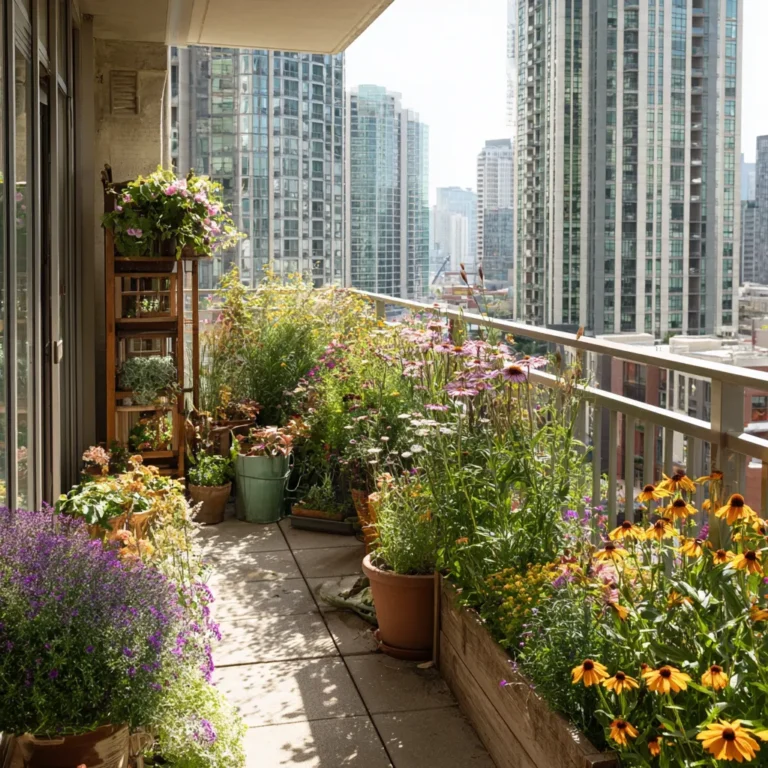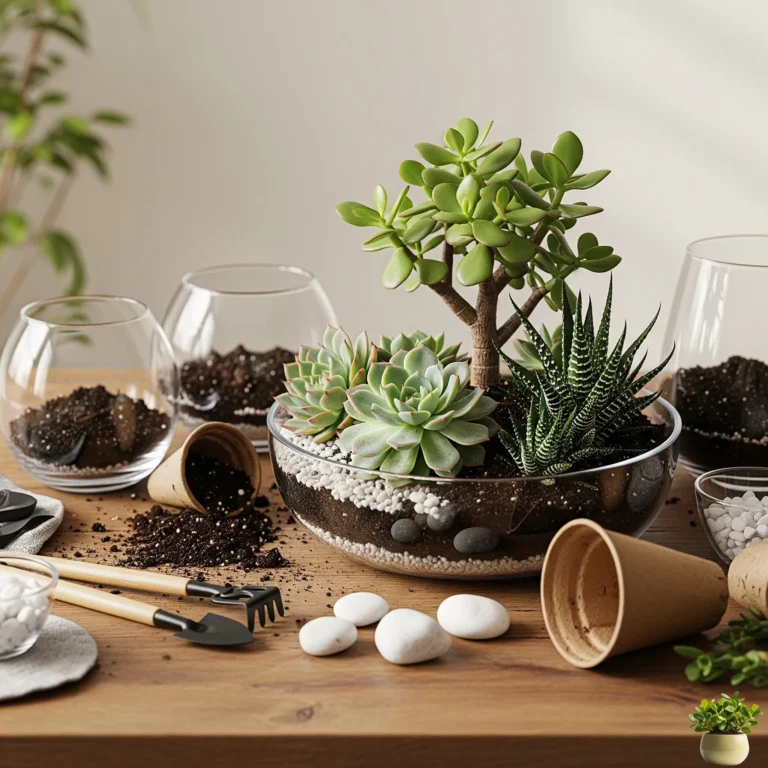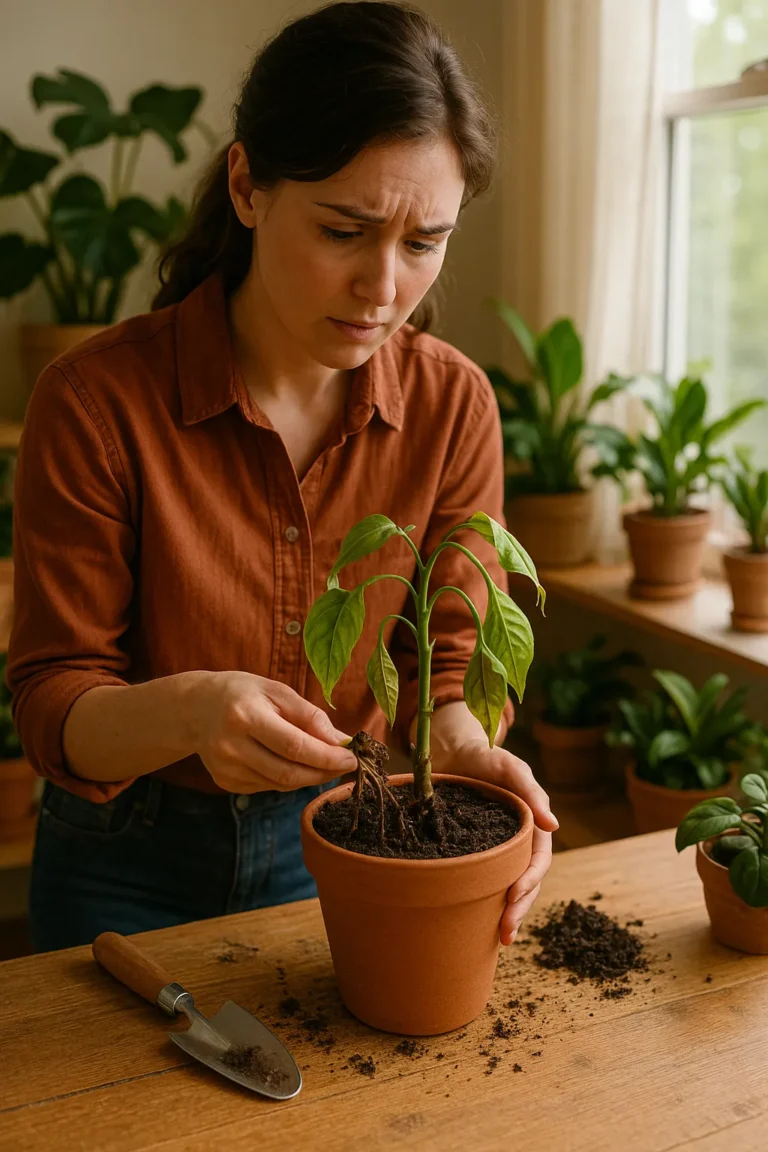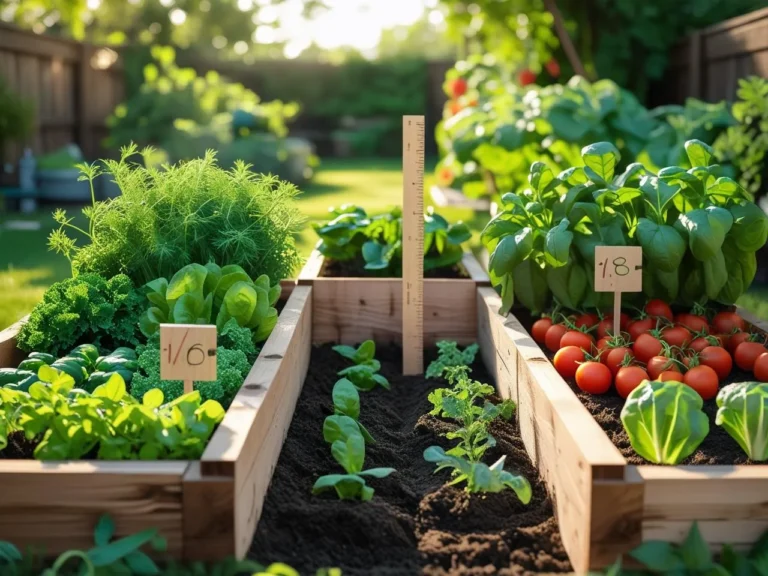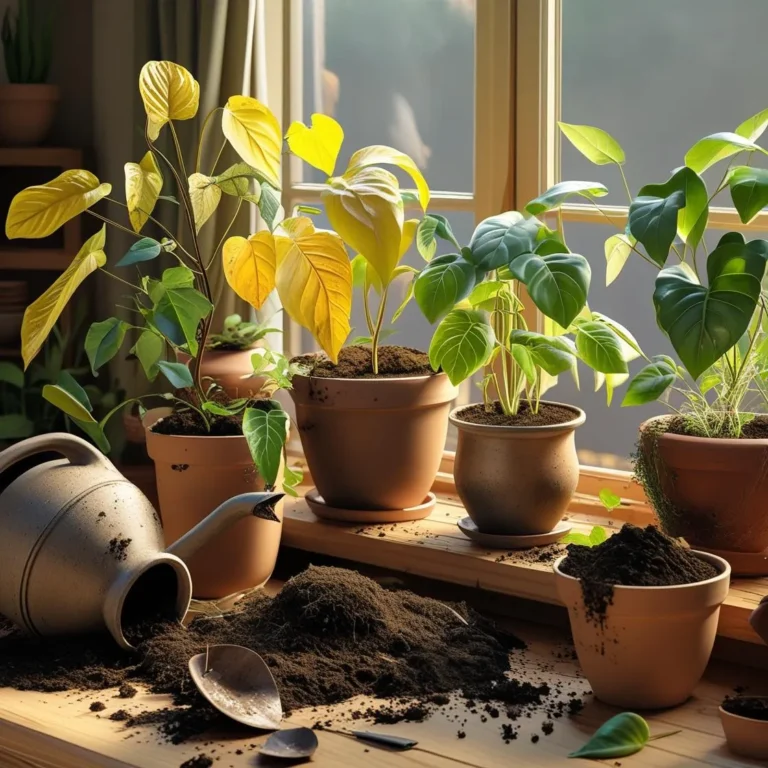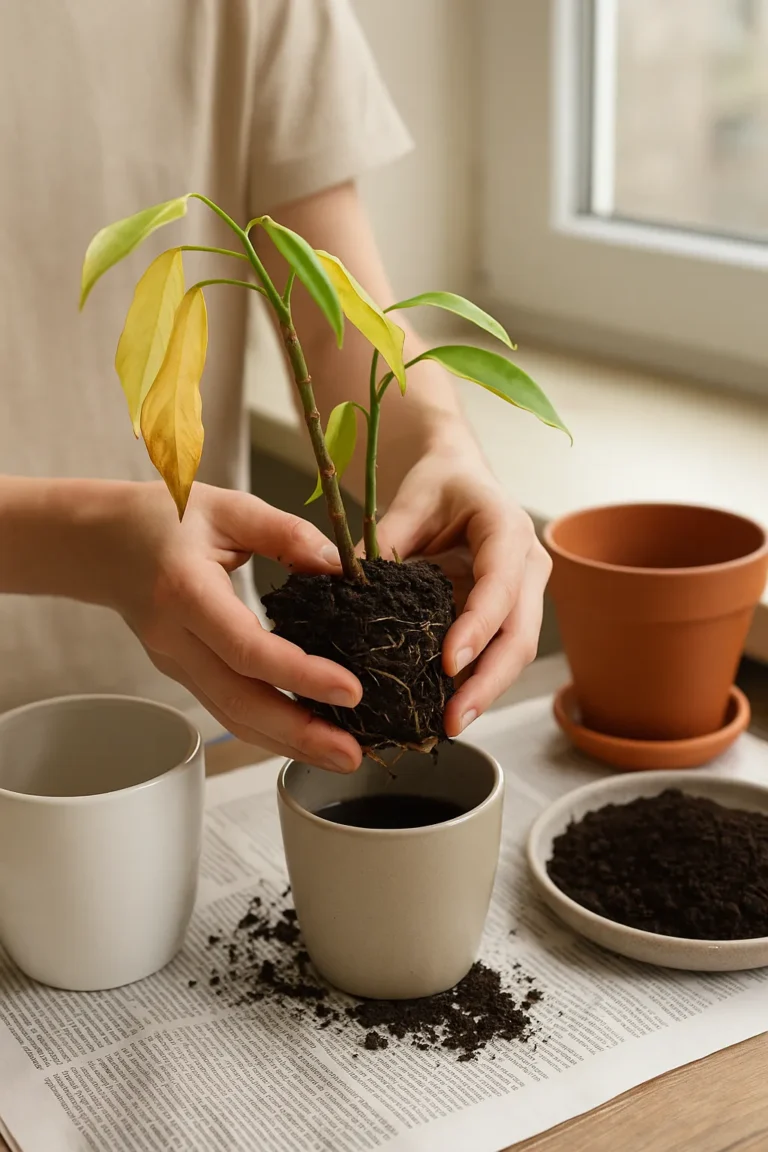The Ultimate Guide to Indoor Herb Gardens for Beginners
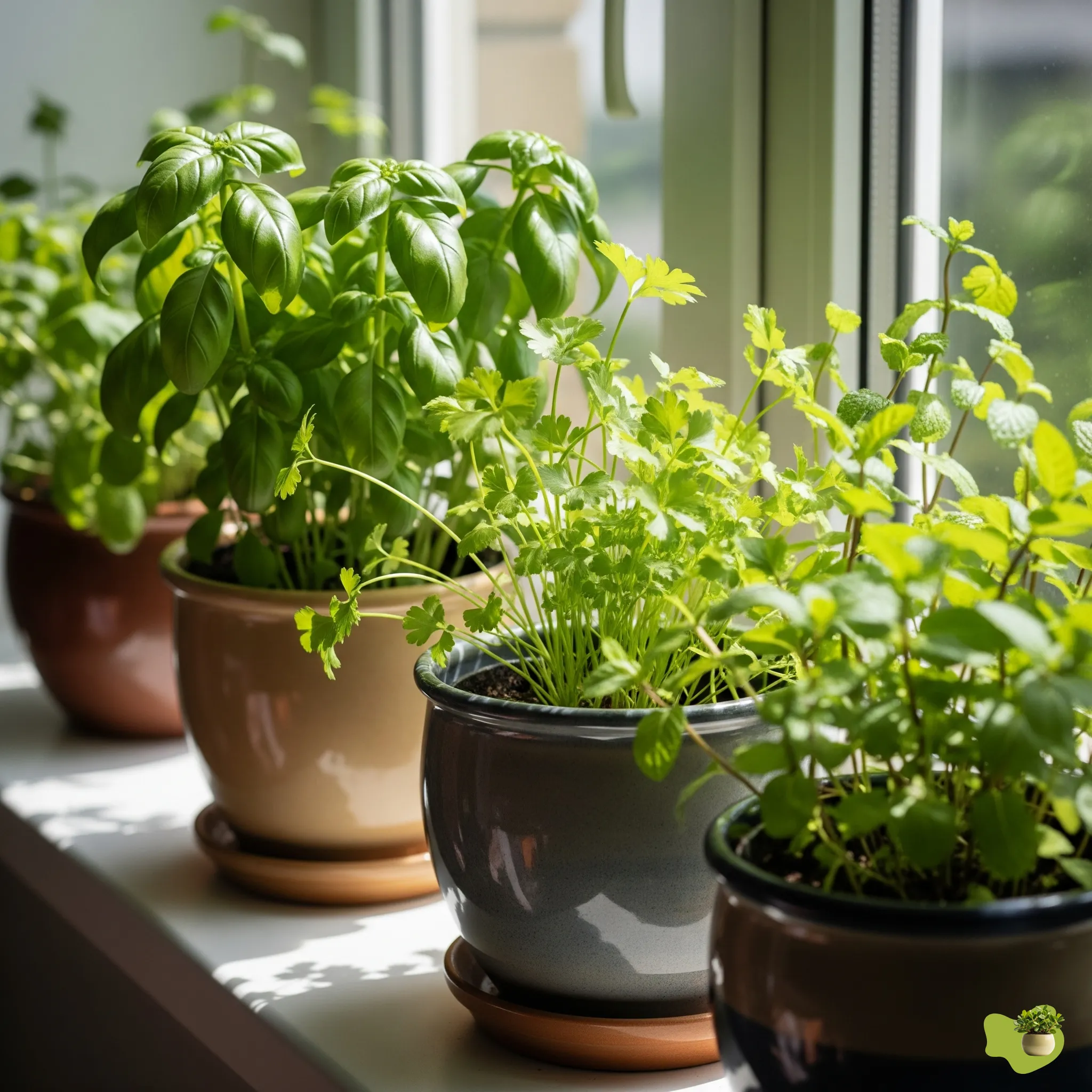
Creating an indoor herb garden revolutionizes your cooking while saving money year-round! Fresh herbs transform ordinary meals into restaurant-quality dishes, and growing them yourself costs pennies compared to store prices. An indoor herb garden provides constant access to aromatic basil, zesty mint, and flavorful parsley – perfect for small apartments, condos, or anyone wanting fresh ingredients steps from their stove.
Even complete beginners can successfully grow herbs indoors with minimal space and effort. Let’s create your thriving kitchen garden!
Best Herbs for Indoor Gardening
| Herb Name | Light Needs | Best Use in Cooking |
|---|---|---|
| Basil | Bright sunlight | Italian dishes, sauces |
| Mint | Partial shade | Teas, desserts, mojitos |
| Parsley | Indirect sunlight | Garnish, salads, soups |
| Chives | Bright, indirect | Eggs, dips, potatoes |
| Thyme | Full sun | Meats, stews, marinades |
| Oregano | Bright sunlight | Pizza, pasta, grilled meats |
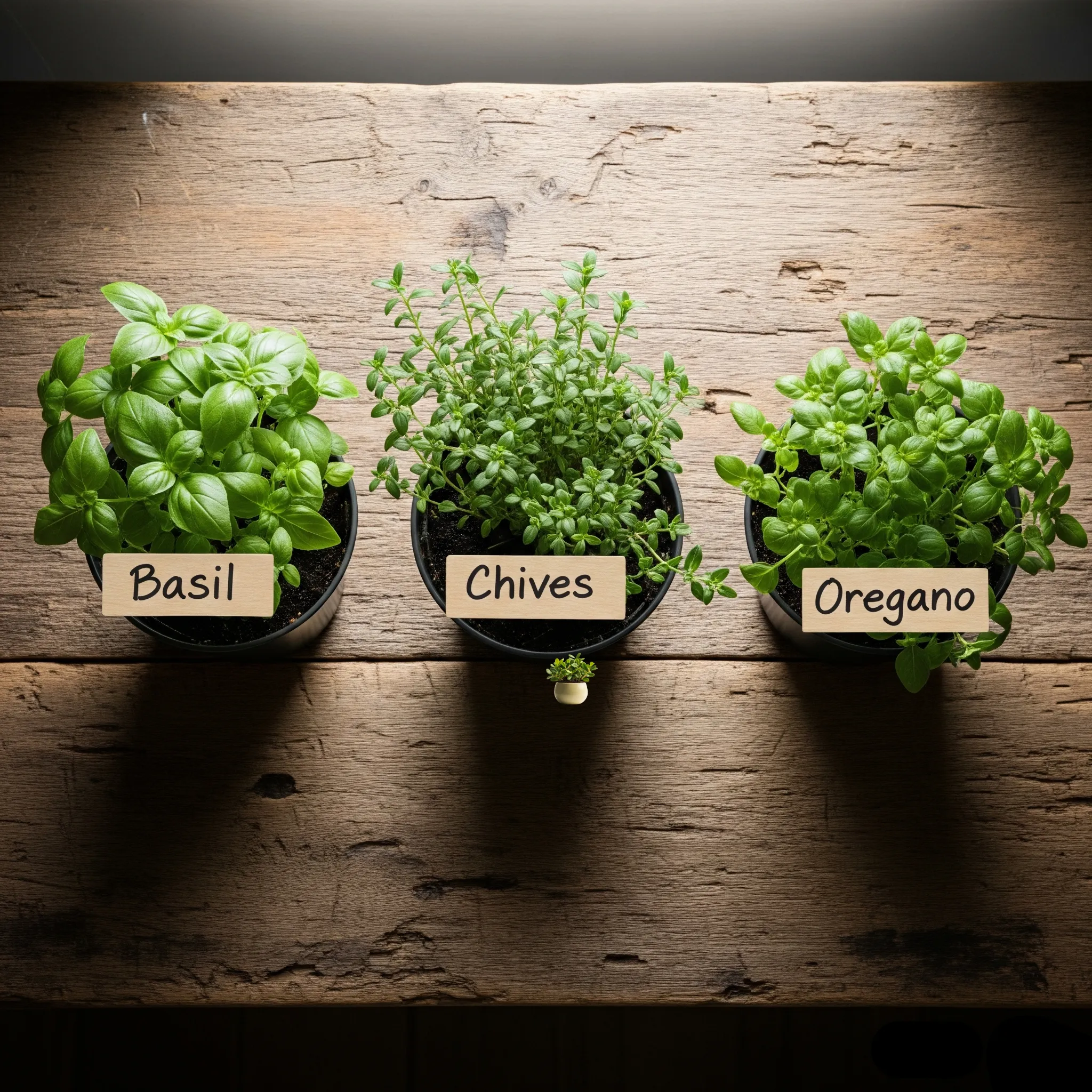
These best herbs for kitchen garden setups thrive indoors and provide maximum culinary impact. Start with 3-4 varieties you use most often – basil and parsley are excellent beginner choices due to their versatility and forgiving nature.
Choosing the Right Containers & Soil
Success with container herbs depends on proper foundation:
Container Requirements:
- Drainage holes are absolutely essential
- 6-8 inch diameter minimum for most herbs
- Ceramic, terracotta, or food-safe plastic
- Saucers to protect surfaces from water damage
Soil Selection:
- Organic, well-draining potting mix only
- Add perlite for extra drainage if needed
- Never use heavy garden soil (causes root rot indoors)
- pH range 6.0-7.0 ideal for most herbs
Space-Saving Tips:
- Vertical herb walls maximize small kitchens
- Tiered plant stands create multiple growing levels
- Hanging planters work well for trailing herbs like thyme
Light, Temperature & Placement for Indoor Herbs
Understanding herb light requirements ensures healthy, flavorful plants:
Optimal Placement:
- South-facing windows provide maximum light intensity
- East windows offer gentle morning sun
- West windows can work with afternoon filtering
- North windows need grow light supplementation
Temperature Control:
- Ideal range: 18–24°C (65–75°F)
- Avoid drafty areas near doors or heating vents
- Maintain consistent temperatures for best growth
- Most herbs tolerate slightly cooler nights
Pro Tips:
- Rotate pots weekly for even growth
- Use reflective surfaces to maximize available light
- Group plants together to increase humidity naturally
Indoor Herb Garden Care Checklist
| Care Element | Recommendation |
|---|---|
| Light | 6+ hrs/day (or use LED grow lights) |
| Watering | Water when top inch is dry |
| Fertilizer | Every 2–4 weeks (half-strength) |
| Air circulation | Open windows occasionally, don’t crowd |
| Harvesting | Pinch regularly to encourage growth |
| Temperature | Keep between 65–75°F consistently |
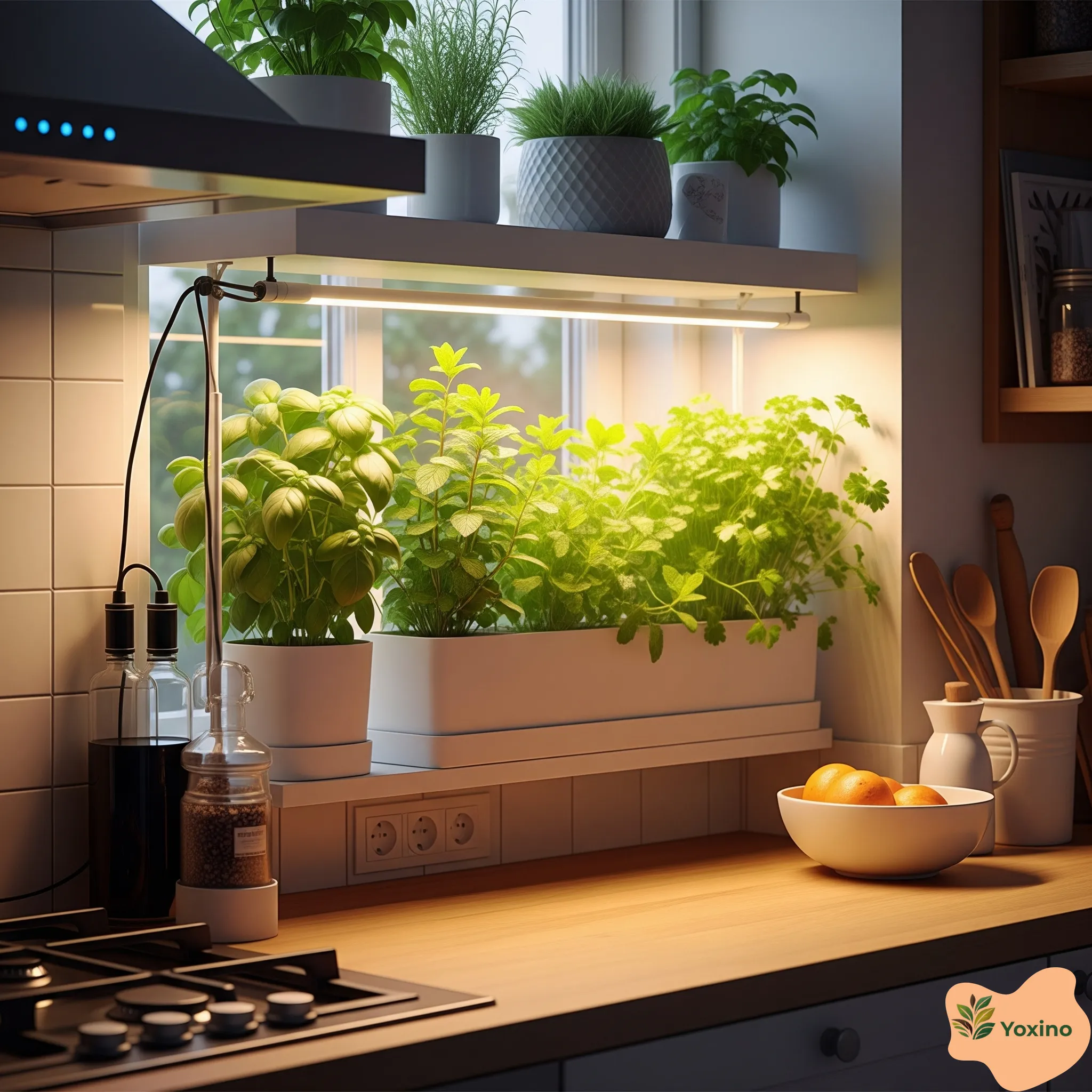
Step-by-Step: Starting Your Indoor Herb Garden
Step 1: Select Your Herbs Choose 3-5 herbs you actually cook with regularly. Popular beginner combinations include basil-parsley-chives or mint-oregano-thyme.
Step 2: Prepare Containers Fill pots with quality potting mix, leaving 1 inch space at top. Ensure drainage holes aren’t blocked.
Step 3: Choose Prime Location Place near your brightest window or install LED grow lights 12-18 inches above plants.
Step 4: Plant & Water Plant seeds or transplant seedlings, water gently until soil is moist but not soggy.
Step 5: Maintain & Harvest Check soil moisture daily, harvest regularly once plants establish (usually 3-4 weeks).
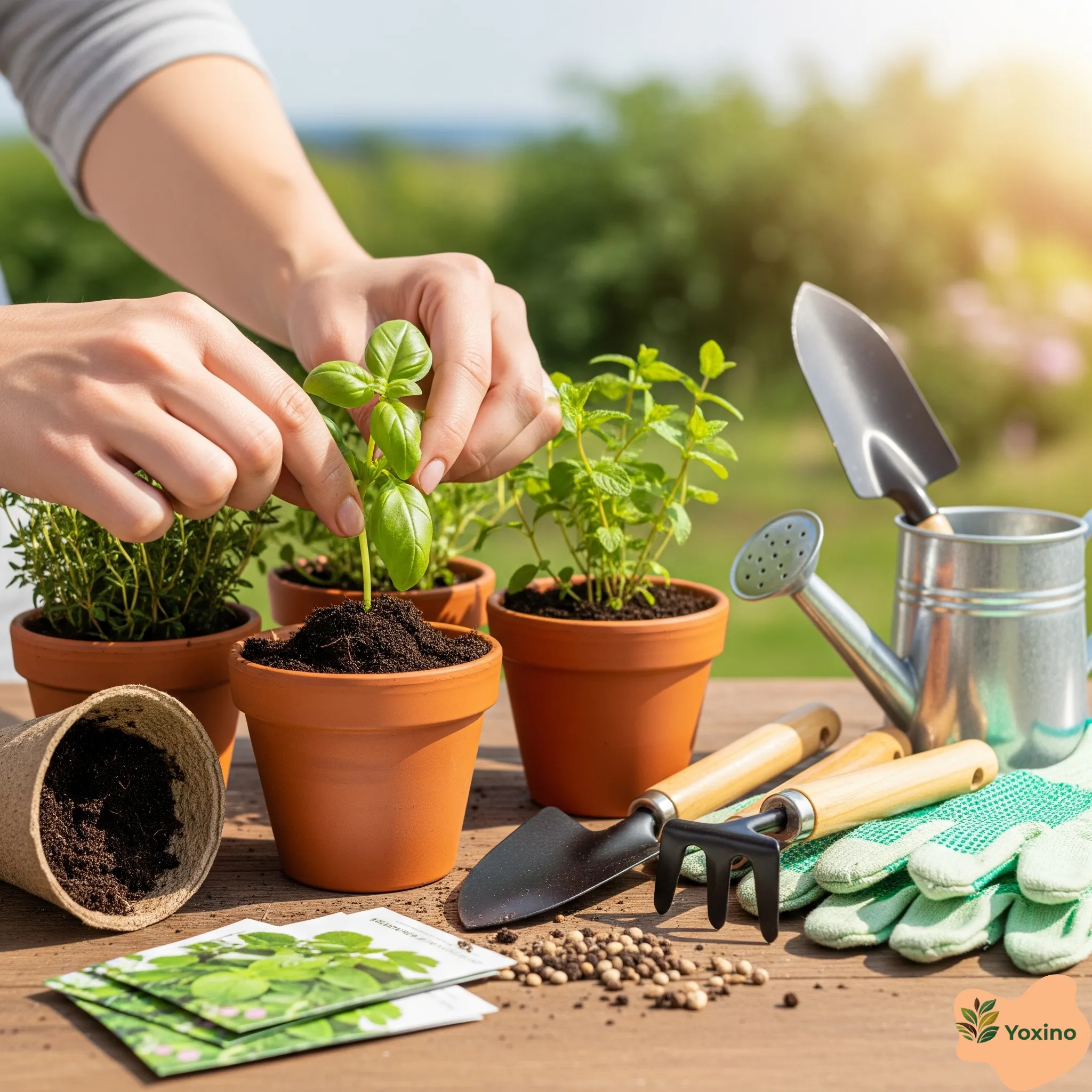
Essential Herb Gardening Tips for Success
Watering Wisdom:
- Stick your finger 1 inch into soil – dry means water time
- Water slowly until it drains from bottom holes
- Empty saucers after 30 minutes to prevent root rot
- Morning watering allows excess moisture to evaporate
Fertilizing Facts:
- Use liquid fertilizer at half the recommended strength
- Feed every 2-4 weeks during growing season
- Reduce fertilizing in winter when growth slows
- Over-fertilizing reduces essential oil concentration (less flavor!)
Harvesting Techniques:
- Start harvesting when plants reach 6 inches tall
- Pinch from the top to encourage bushy growth
- Never harvest more than 1/3 of the plant at once
- Regular harvesting prevents flowering and maintains tenderness
Common Indoor Herb Garden Mistakes to Avoid
Overwatering: The #1 killer of indoor herbs. Most herbs prefer slightly dry conditions between waterings.
Insufficient Light: Leggy, pale plants indicate light starvation. Move closer to windows or add grow lights.
Neglecting Harvest: Unharvested herbs become bitter and stop producing new growth.
Wrong Soil: Garden soil is too heavy for containers and doesn’t drain properly indoors.
Overcrowding: Plants need air circulation to prevent fungal issues and pest problems.
Seasonal Care Adjustments
Spring: Begin fertilizing as daylight hours increase and growth accelerates Summer: Move pots away from hot afternoon sun, increase watering frequency Fall: Reduce fertilizing, prepare grow lights for shorter days Winter: Supplement with artificial lighting, water less frequently
Maximizing Your Indoor Herb Garden Success
Companion Planting: Group herbs with similar light and water needs together for easier care and better growth.
Succession Planting: Start new basil and parsley plants every 3-4 weeks for continuous harvests.
Preservation Techniques:
- Freeze herbs in ice cube trays with olive oil
- Dry excess harvest for winter seasoning
- Make herb butters and pestos to preserve peak flavors
Troubleshooting Common Problems
Yellow Leaves: Usually overwatering or poor drainage Leggy Growth: Insufficient light – move to brighter location Pest Issues: Improve air circulation, inspect plants weekly Slow Growth: May need fertilizer or more light
Expanding Your Indoor Herb Garden
Once you master the basics, consider adding:
- Rosemary: Hardy and aromatic for Mediterranean dishes
- Sage: Perfect for fall flavors and meat seasonings
- Cilantro: Fast-growing for Mexican and Asian cuisines
- Dill: Excellent for fish dishes and pickling
Conclusion
Starting an indoor herb garden transforms both your cooking and your connection to fresh ingredients. With proper containers, adequate lighting, and consistent care, anyone can successfully grow herbs indoors year-round. The investment in supplies pays for itself within weeks through savings on expensive store-bought herbs.
Your kitchen deserves the upgrade that fresh herbs provide – vibrant flavors, incredible aromas, and the satisfaction of growing your own food. Start small with 3-4 favorite herbs, master the basics, then expand your collection as confidence grows.
This weekend is perfect for beginning your herb gardening journey. Your taste buds (and wallet) will thank you!

